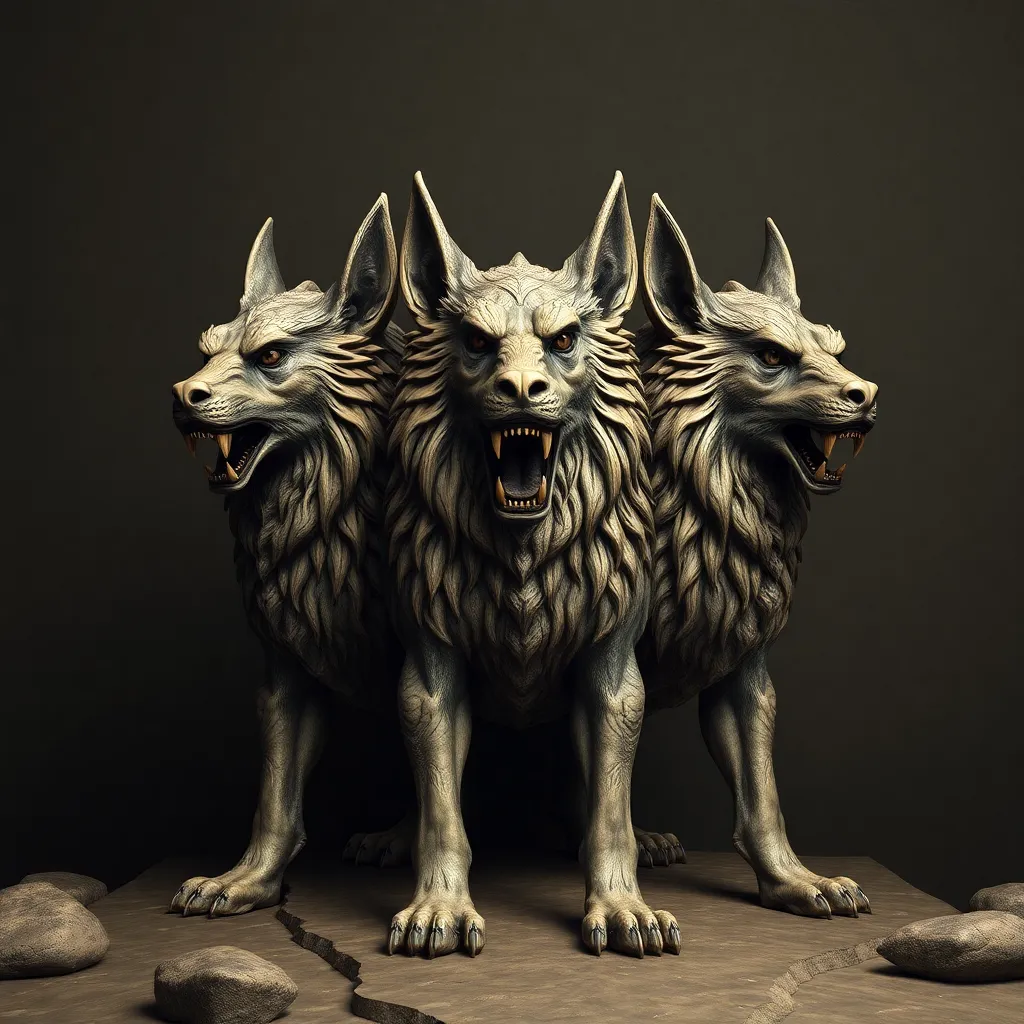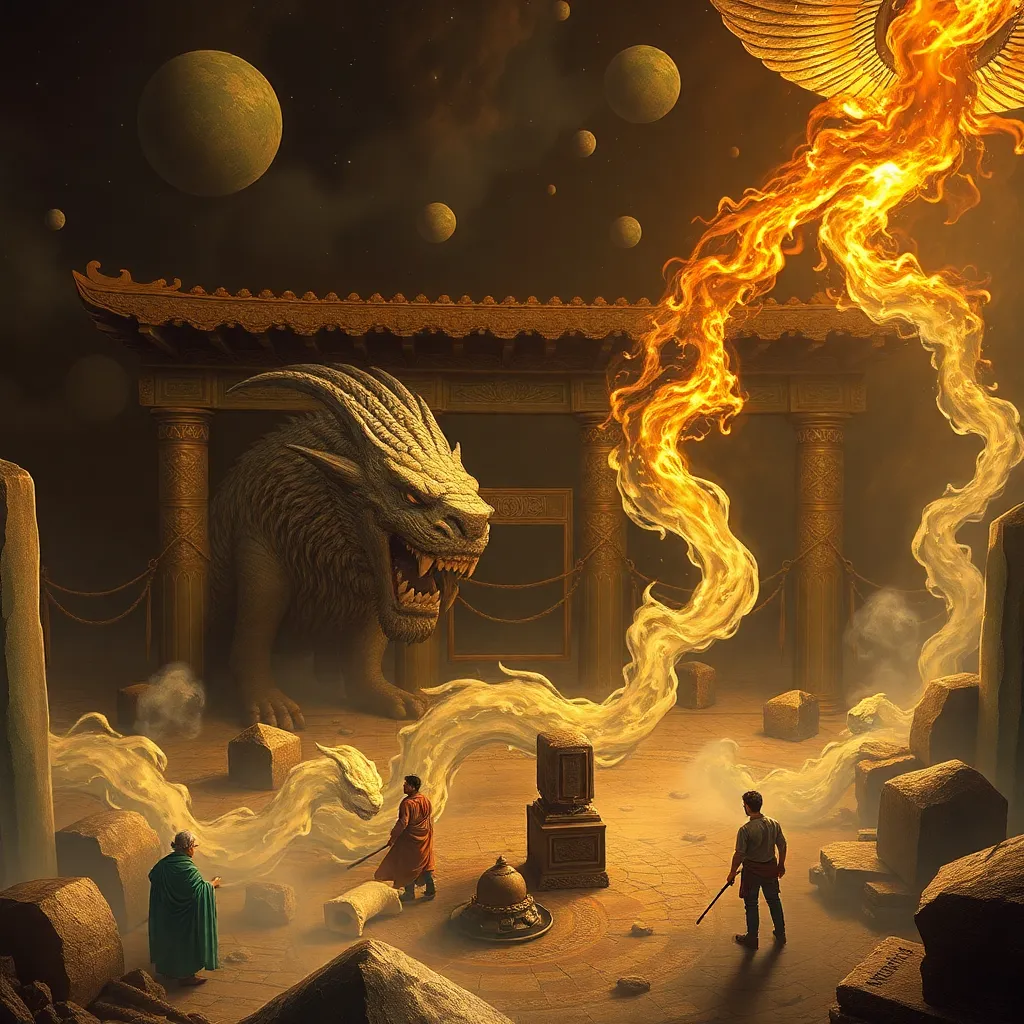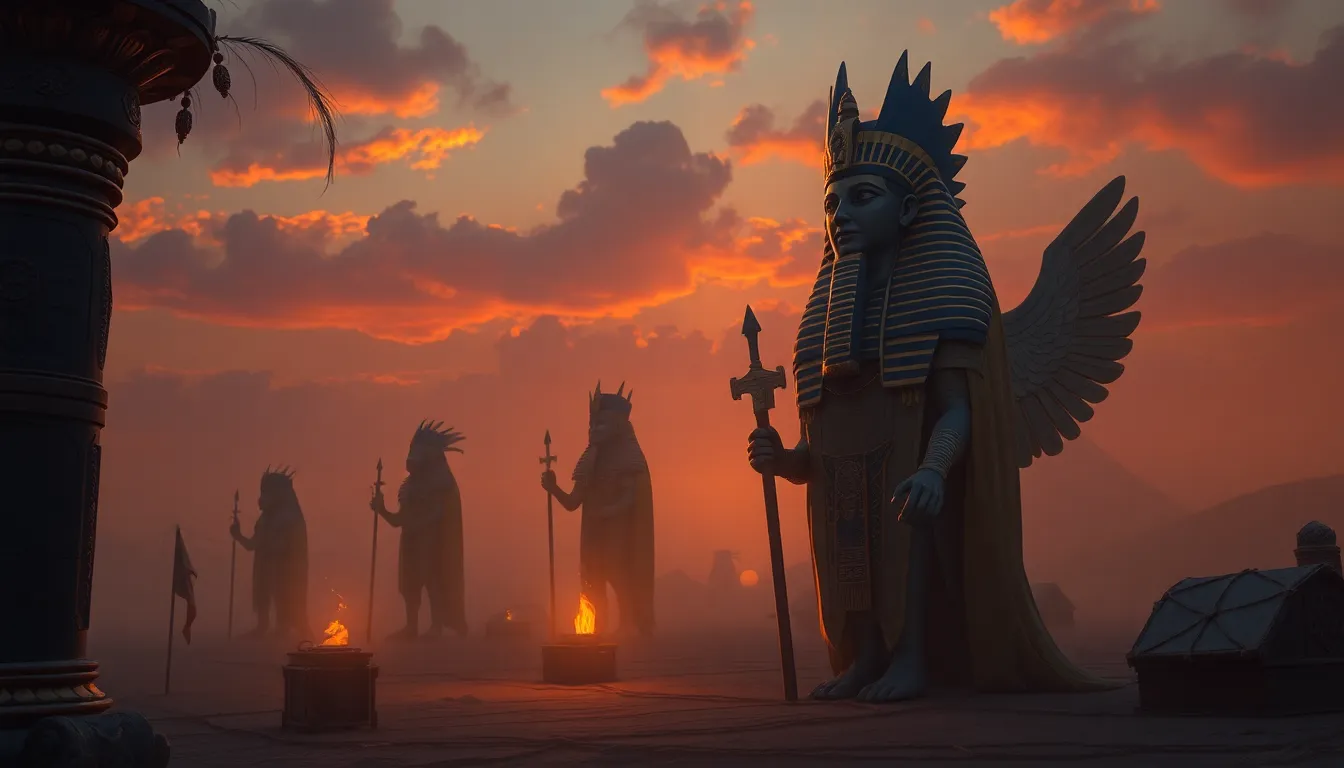The Three Heads of Cerberus: Decoding the Meaning Behind the Triple-Headed Form
I. Introduction
Cerberus, the mythological creature known as the three-headed dog, has captivated human imagination for centuries. Originating from ancient Greek mythology, Cerberus is most famously recognized as the guardian of the Underworld, preventing the dead from escaping and the living from entering. The significance of its triple-headed form has been the subject of much speculation and interpretation, representing a myriad of themes ranging from time to mortality.
This article aims to explore the various meanings and interpretations associated with Cerberus and its three heads, delving into historical contexts, symbolism, literary representations, and psychological interpretations.
II. Historical Context of Cerberus
The origins of Cerberus can be traced back to Greek mythology, where it is typically depicted as a fierce and terrifying creature. Ancient texts, such as those by Hesiod and Apollodorus, provide insight into Cerberus’s lineage as the offspring of the monsters Typhon and Echidna. Cerberus’s primary role as the guardian of Hades emphasizes its importance in the mythological narrative.
Throughout history, Cerberus has been depicted in various art forms, including pottery, sculptures, and frescoes. These representations often highlight its formidable appearance—three heads, a serpent for a tail, and a body covered in fur. As cultures evolved, so too did the character of Cerberus, adapting to fit the values and beliefs of different societies.
III. Symbolism of the Three Heads
The three heads of Cerberus carry deep symbolic meaning:
- Representation of Past, Present, and Future: Each head can symbolize different temporal aspects, suggesting Cerberus oversees all of time, embodying the cyclical nature of existence.
- Guardians of the Underworld: The heads function as a fierce deterrent against intruders, representing the vigilance required to protect sacred spaces and the boundaries between life and death.
- Connection to Mortality: Cerberus serves as a constant reminder of mortality, emphasizing the inevitability of death and the importance of honoring those who have passed.
IV. Cerberus in Literature and Popular Culture
Cerberus has appeared in numerous works of classical literature. In Homer’s “The Odyssey,” the hero Odysseus encounters the creature during his journey to the underworld. Virgil’s “Aeneid” further illustrates Cerberus as a formidable guardian, emphasizing its role in the afterlife.
In modern adaptations, Cerberus has been transformed into various forms across film, literature, and video games. From being depicted as a fearsome beast in movies like “Hercules” to a more nuanced character in games like “God of War,” Cerberus’s legacy continues to evolve. This adaptability highlights its enduring appeal and relevance in contemporary storytelling.
V. Psychological Interpretations
The triple-headed form of Cerberus can also be analyzed through psychological lenses. Carl Jung’s theories of archetypes provide a framework for understanding Cerberus as a representation of the human psyche:
- Representation of the Psyche: Each head may symbolize different aspects of the self—consciousness, subconsciousness, and the collective unconscious.
- Protection and Threat: Cerberus embodies both the protective instincts we possess and the threats we face, illustrating the duality of human nature.
VI. Cerberus and the Concept of Duality
Cerberus embodies the balance between life and death, serving as a metaphor for the constant interplay between opposing forces. The themes of fear and loyalty are intricately woven into its character, representing how guardianship can be both a source of safety and a source of dread.
Furthermore, Cerberus can be viewed as a metaphor for inner conflict. The struggle between our primal instincts and societal expectations resonates deeply within the story of Cerberus, making it a powerful symbol of the human condition.
VII. Cerberus in Art and Iconography
Throughout history, Cerberus has inspired countless artists. From ancient Greek pottery depicting its ferocious form to Renaissance paintings showcasing its mythical nature, the representations of Cerberus vary significantly across cultures and time periods.
Artistic interpretations of the three heads often emphasize their distinct characteristics, with each head reflecting different emotions or attributes such as ferocity, wisdom, and vigilance. Moreover, Cerberus has played a role in architectural symbolism, often appearing in the design of gates and entrances, symbolizing the threshold between life and death.
VIII. Conclusion
The triple-headed form of Cerberus is rich in meaning, embodying themes of time, mortality, guardianship, and psychological complexity. As a mythological figure, Cerberus has transcended its origins, continuing to inspire interpretations across various fields and cultures.
Its enduring legacy in mythology and culture reflects humanity’s fascination with the dualities of existence, making Cerberus a timeless symbol of protection, fear, and the inevitable journey towards the afterlife. In contemporary society, the relevance of Cerberus persists, reminding us of the complexities of our own psyches and the eternal balance between life and death.



